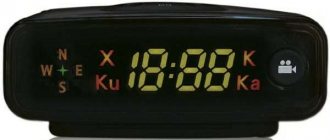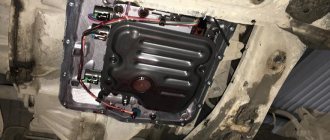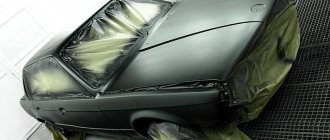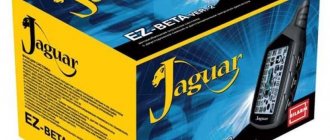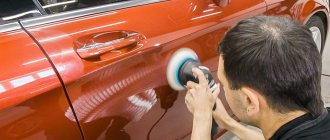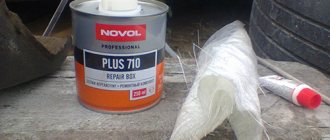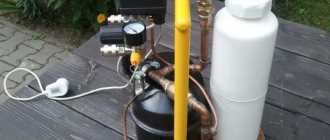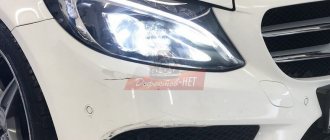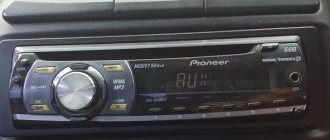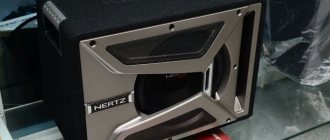Metal coatings are constantly exposed to aggressive influences from atmospheric phenomena: temperature fluctuations, precipitation, ultraviolet rays lead to the destruction of surfaces. These factors accelerate the destructive process; coatings not only lose their attractive appearance, but can also fail, and therefore require repair and restoration of their original appearance.
During repairs, it is necessary to achieve not only an aesthetic effect, but also to protect the surface from subsequent destruction.
The use of primer mixtures is one of the simplest and most affordable ways to finish and protect surfaces. Such primers are produced in a variety of colors, are easy to apply, and have an affordable price.
Composition and technical characteristics
Acrylic primer. For metal processing, a primer with an acrylic composition based on organic solvents is used. This mixture has proven itself in practice as a reliable and high-quality composition, suitable for processing aluminum and duralumin coatings, helping to obtain a high-strength coating and its excellent protection.
When using such a primer, the properties of the metal do not change even when exposed to high temperatures, since acrylic has a temperature-compensating characteristic.
Acrylic primer is suitable for processing products whose surface is coated with:
- plastic;
- steel;
- aluminum;
- putty;
- metal and so on.
It is resistant to temperature, humidity and adverse weather conditions.
Acrylic aerosol primer is used to treat various types of plastic coatings, small areas such as a rear view mirror or a plastic bumper.
A primer used to prevent corrosion. To ensure good protection of metal parts from corrosion, as well as better adhesion of paint to the surface, an anti-corrosion primer is used.
Strengthening soil. This composition is used to eliminate scratches, dents, small defects, as well as any cracks on car bodies. Several layers of this highly adhesion primer are sufficient to fill mechanical damage.
Corrosive or acidic primer. This composition is designed to work only on metal; it corrodes a thin layer of coating and ensures reliable paint adhesion and fights corrosion. However, an acid primer does not remove rust, but does not allow it to spread.
Alkyd primer is universal, suitable for wood, concrete, and metal.
Drying speed of different types of aerosols
The drying speed of layers of primer and a mixture with pigments from a spray can is influenced by the following factors: the material being processed, the type and composition of the aerosol, the conditions of its storage and application (temperature, humidity), the number of layers.
Aerosol mixtures adhere perfectly to the area being painted; they cover metals, plastics, wood, stones, clay, glass, and plastic products. Compositions from spray cans dry quickly and are resistant to color loss, which is why they are popular among consumers.
The drying speed of aerosol coatings depends on the absorbency of the material. Processing and painting of objects should be done outdoors or in a well-ventilated area at an air temperature of 18-25°C and humidity up to 60%. These conditions are optimal for uniform coverage and natural drying.
If desired, varnish is applied to the paint layer. In this case, the protective properties of the dye are increased, a decorative effect appears, but the product takes longer to dry.
Acrylic sprays
Drying time for acrylic composition ranges from 40 minutes to 3 hours. If the filler contains more acrylic resin, drying occurs faster. When diluting the suspension with water, longer drying will occur. A porous surface absorbs acrylic faster than a smooth one. A sudden increase in temperature during drying (when heated with a hairdryer) can cause the acrylic mixture to peel off.
Absorption of acrylic occurs faster on a porous surface.
Pay attention to: How to paint a metal stove in a bathhouse?
Alkyd-based aerosols
Alkyd mixtures have increased resistance to weathering, are elastic and durable. The drying speed of the “dust free” layer is 10-15 minutes.
Nitrocellulose enamels
Natural drying of alkyd mixtures and nitrocellulose compositions occurs at an ambient temperature of more than 22°C and humidity not exceeding 80%. With a multi-layer coating, the drying time for alkyd and nitro-enamel spraying is:
- first layer - 20-25 minutes;
- second layer - 6-7 hours;
- third layer - 24 hours.
If polishing is necessary, the last paint layer is dried for 7 days.
Epoxy primer
Epoxy primer in an aerosol contains epoxy resin with a hardener, stabilizer, solvent and other additional chemicals, with the help of which the polymer mass remains liquid in a container before it is sprayed under gas pressure onto the coating. The solvent begins to quickly evaporate, and the hardener is activated by air and binds the composition applied to the solid film.
Epoxy primers have enhanced surface insulation properties from moisture, which help protect the coating from aggressive chemical influences. All-season epoxy mixture has high adhesion to galvanized, steel and aluminum surfaces.
Classification of primers for cars. What do you need to know?
If the foundation of a building is laid with high quality, then this can fully guarantee the durability of the structure.
The same rule applies to the most ordinary cars, since the primer for a car is the base for the paintwork and protects the metal from corrosive phenomena. If you want to get a high-quality body coating, then you should not spare money on car primers. This process is one of the important stages of body repair. Putty allows you to correct the shape of the part, and the primer helps in treating against corrosion, and is also an intermediate layer between the putty and paint. This is important because paint cannot simply be applied to metal or putty. When priming, several products are used. It is an epoxy automotive primer, leveler and sealer.
Epoxy primer is water resistant. It is used to protect the surface from oxidative processes. Before application, the mixture is mixed with a hardener in a certain proportion. The substance is applied using a spray gun in a couple of layers.
The primer can also be applied in this way: first filler, then several layers of primer. They are then sanded and then a sealant is applied.
The great thing about epoxy primer is that there is no sanding required when using it. Minor imperfections found during painting can be eliminated with fine sanding.
High-quality soil is quite expensive, but if you save money, you will soon need to repeat the operation again.
Inexpensive soils shrink over time, and all defects become clearly visible. Obviously, fixing them will require additional costs.
The primer for metal adheres perfectly to the surface and protects the metal from corrosion.
There are passivating primers that contain chromium compounds and make the surface water resistant. This material with inert additives is protected not chemically, but physically by preventing water from passing through. It is used for small (local) work.
Protective mixtures for primers contain inclusions of metals that have less potential than iron. If damage occurs, this type of material will be the first to react with an aggressive environment, that is, it will protect the metal. Other types of primers for cars are also used: phosphating, rust modifier primers, one-component, two-component, alcohol.
The main types of soils used for car repairs
- Epoxy type - anti-corrosion primer for cars. This type of mixture provides an excellent protective coating for steel due to the fact that it contains high quality resins and additives. This primer can be used for various types of vehicles. Paint can be applied directly to such primer. You can use it with the wet-on-wet method. It can also be used with hardener H 5950 or H 5960 from Novol.
- Reactive anti-corrosion primer based on polyvinyl resins. It can be used on a variety of materials. This versatility is explained by excellent adhesion quality and increased corrosion resistance. The material is applied in a very thin layer, but at the same time has good resistance to environmental influences
- Acrylic primers for cars with one component. They are sprayed using a special gun. The material provides adhesion to a metal substrate; it does not have anti-adhesion properties. Mainly used for leveling surfaces. Dries quickly.
- Two-component primer contains acrylic resins. It has a high degree of viscosity and provides a large coating thickness. Masks significant defects. It has excellent adhesion properties to various materials and has a high degree of corrosion resistance. Excellent insulation of polyester putties and acrylic paints. Since a mixture of white and black is mixed, you can achieve the desired shade, and this is important when choosing paint colors.
- A one-part plastic primer can also be applied using a paint gun. It increases the adhesive properties of primers, acrylic and polyurethane varnishes.
There are primers of various colors that allow you to save paint. Acrylic types are used together with special acrylic thinners. It is important to remember that it is better to use solvents from well-known brands.
Do not forget that when carrying out body work it is necessary to use things such as a respirator and gloves, which will help minimize unpleasant phenomena.
How to use?
Working with metal. With this type of work, care must be taken to protect against corrosion. Before painting, the metal must be subjected to acid priming, which will help protect the surface from rust. Then it needs to be treated with epoxy resins, and then with anti-corrosion primer type 1K.
Acid priming. This type of priming is carried out using a product that consists of two components. It is good for twenty-four hours after stirring if its temperature is twenty degrees Celsius. The main work is carried out after the acidic soil has dried, but this layer still has activity on the surface. Acid soil is sanded using sandpaper with grain P280-Z400. Different layers can be applied with a break of five minutes. You can apply the mixture in two or three layers. It dries from thirty to ninety minutes at twenty degrees Celsius.
This type of material cannot be covered with polyester putty, as it can dissolve the primer. Only a mixture of type 2K can be used. You can safely apply a protective primer to hard putty, since the putty will not be chemically active.
It is very important according to the work technology to wait for each layer to dry completely.
Soil drying phases:
- The state of drying when dust no longer adheres to the treated surface. Pressure may cause deformation of the applied layer.
- Suitability of the processed part for installation. In this case, surface deformation can be observed under strong impact on the part.
- Complete drying. The paint layer can be processed and sanded.
Peculiarities
Epoxy composition is used when processing:
- plastic;
- galvanized and chrome-plated parts;
- coatings made of aluminum and ferrous metals;
- light alloys.
Epoxy primer, produced in the form of an aerosol in cans, is used during car repairs to prepare metal surfaces for painting. It was made from a certain resin and chemicals, and is used to create a protective film on the surface of the metal and prevent the process of its destruction.
To restore some equipment parts, using aerosol-type primer is the best option
This mixture has an advantage over acidic ones, since it can be sprayed on all types of metal coatings. According to user reviews, it is considered the best primer for metal, because it not only protects against corrosion, but also insulates from old coatings.
Anti-corrosion primer for cars
Automotive primer as a special material is used in automotive service for several purposes and in different situations:
- Prevention of corrosion processes in the car. After cleaning and processing the body to remove rust, a special primer is applied to the surface to prevent the appearance of new rust;
- High-quality coating in the form of varnish or paint.
- It perfectly retains moisture, prevents the appearance of new foci of rust and their penetration into the depths of the metal.
According to its composition, such soil is divided into several large types:
- Product based on polyurethane . Such soils have excellent elasticity. To apply such a primer, the metal surface must first be prepared and cleaned. This type of material has good protective properties and not only prevents rust, but also protects the metal from other influences;
- Alkyd primers. This type of material is considered one of the best on the market, as its qualities are excellent for preventing corrosion processes. A special feature of this material is the addition of zinc particles, which are known to resist corrosion well. Applying such material to a surface covered with rust, like any anti-corrosion primer, is strictly prohibited.
On video, anti-corrosion primer for cars:
Selecting soil in aerosols
Mixtures of soils are produced in jars and cans in the form of an aerosol. Aerosol cans are one-component formulations; immediately after purchase they are ready for use without additional preparation.
Using an aerosol in cans is most convenient for use.
Aerosol is a product whose identifiable qualities are not much different from primers made from an aluminum container. After applying this component, the surface turns out to be very smooth, where the difference between the painted and untreated part is completely invisible.
Tips and recommendations for use
Before applying the primer, careful preparation of the surface in stages is required.
- The area to be treated must be washed and dried. To thoroughly clean all exfoliated fragments, you need to use a metal brush. With its help, you can easily remove rust from all unreliable areas, then you need to use sandpaper for metal.
Important. The easiest way to remove old paint is with a special remover - gel for paints.
Instructions for use are on the packaging.
- At the second stage, the area must be degreased using white spirit.
- Then it is carefully cleaned to remove any signs of rust.
- It is carefully sanded to get rid of uneven surfaces.
- The putty mixture is applied, filling scratches and chips with it.
- The coating is sanded.
Advice. When you need to leave some places untouched, it is recommended to stick a specialized tape, like masking tape, on the coating, or attach regular paper.
Consumption per 1 m2
Each type of primer has its own consumption for a certain area, so before purchasing it is recommended to carefully read the instructions for use of the drug.
Zinc based sprays
When processing artistic forging products, to give them a beautiful light gray non-glossy look, as well as to protect metal surfaces, for example, in country houses (fences, awnings, etc.), zinc aerosols are used. Zinc spray in aerosol cans is a composition of zinc pigment and a polymer binder with a high zinc content, used to prevent the destruction of metals. It is applied to the surface to be treated by spraying. The result is a wear-resistant coating with increased protective functions and durability.
Treat everything that is subject to destruction with an aerosol spray:
- seams after welding;
- metal roofs;
- car bodies;
- exhaust systems.
Advantages and disadvantages
The convenience of the aerosol is that it allows you to do the work yourself. Aerosol primer is very easy to use, it dries quickly, adheres well, is quite fluid and can be easily sanded. Features of applying primer in the form of a spray
Before applying the mixture, you need to vigorously shake the aerosol in the can, then apply it to the damaged part, directing the spray at a right angle. In this case, the container must be kept no closer than 30 centimeters from the plane being repaired. Most often, spray with progressive movements to obtain an even and thin coating without smudges, at least 3 layers, waiting at least 30 minutes between procedures.
Spraying should be done over the entire surface to be treated.
It must be remembered that when using an epoxy-based aerosol primer, it is observed that it dries for a long time. If you need quick results, give preference to products with quick drying.
How to use an aerosol primer - step by step diagram
Step 1: Surface Cleaning
It would not be superfluous to remind once again that the quality of the primer coating, which can peel off along with foreign particles, depends on how well unreliable areas, dust and dirt are removed from the base. Cleaning also includes degreasing, since if there are oily stains on the base, the compounds we are considering will not stick to the surface. It is advisable to sand down everything, even minor irregularities.
Step 2: Selecting the soil
In principle, even highly specialized mixtures, for example, for metal, can be applied to both concrete and wood. Another thing is that this may not only not improve the adhesion to the surface of the subsequently applied finishing material, but, on the contrary, worsen the contact of the same decorative plaster with the base. For example, metal does not require deep penetration primers, but wood or plasterboard sheets require just such pre-treatment. Therefore, we take exactly the soil that is suitable for the base material.
Step 3: Processing
At this stage everything is simple. We take the can and shake it well until we hear the balls rattling inside. Then we direct the spray nozzle at the wall or ceiling so that the escaping stream hits the surface at an angle of 90 degrees. We hold the can at a distance of 25-30 centimeters from the base being treated and perform back-and-forth movements with the hand from side to side. We smoothly process every centimeter, without lingering in any area longer than necessary. Often 2-3 coats should be applied at 30 minute intervals.
Features of aerosol use and its consumption
During construction and renovation work, it is imperative to prepare the coating before applying finishing materials. There are some peculiarities of using soil in cans. Using primer in the form of an aerosol helps you do without tools: brushes, rollers. There are primers for treating brick, or concrete, plastic and wood. A can can be enough to cover an area of approximately 2 to 6 m2. Primer consumption depends on the type of coating and the degree of destruction. The instructions for use provide detailed information on how to use the aerosol and how much it will be needed for repairs.
When carrying out repair work, sometimes you have to deal with heavily rusted metal parts. It should be noted that it is not entirely necessary to clean them completely; you can simply remove loose fragments of rusty scabs with sandpaper. After this, the primer in the form of an aerosol is applied directly to the rust.
Some tricks for working with aerosol primer
In construction or repair work, sometimes you have to deal with very rusty metal surfaces. But few people know that it is not at all necessary to completely clean them; it is enough to remove fragile fragments of rusty scabs with sandpaper, which may fall off during further work. After this step, it is possible to apply the primer directly to the rust.
When you need to leave some areas of the surface untouched, apply masking tape or something similar to them.
It happens that when coating small objects, there is an overconsumption of the mixture, i.e. you can get by with a small stroke, but a volumetric jet bursts out of the nozzle. In this case, you can simply extract a little liquid from the bottle itself, just direct the stream so that it touches the inner wall of the jar, glass or any other small container.
After this, you should stir the primer liquid so that excess gases come out of it. Now you can simply dip a brush and prime a small object with it without wasting a lot of material. It is important to remember that the temperature limits when working with aerosol primer are not higher than +30 and not lower than +100C.
Advantages of aerosol packaging
The use of epoxy primer in the form of an aerosol has certain advantages and benefits over other forms of applying a protective layer.
It doesn’t take much time to prepare the soil for use: you just need to vigorously shake the can several times and warm it up to about 20-25oC. When working with an aerosol, you need to spray with a very thin stream, slowly treating the surfaces of the most complex shapes and even closed profiles.
If not all of the epoxy primer in the can has come out, then the spray head must be tightly closed, and the mixture can be used again.
Application methods
Acid primer can be applied using several methods and tools:
- Simple brush.
- Spray gun.
- By lowering a metal product into a solution.
- Electrical spraying.
- Using electrodeposition technology.
In everyday life it is customary to use the first 2 tools. Immersion technology is used in factories.
Is it possible to apply paint to acidic soil?
Experts do not recommend applying paint over a layer of one-component acid primer. Otherwise, the components may cause a change in the shade of the paint due to the action of the yellow pigment.
